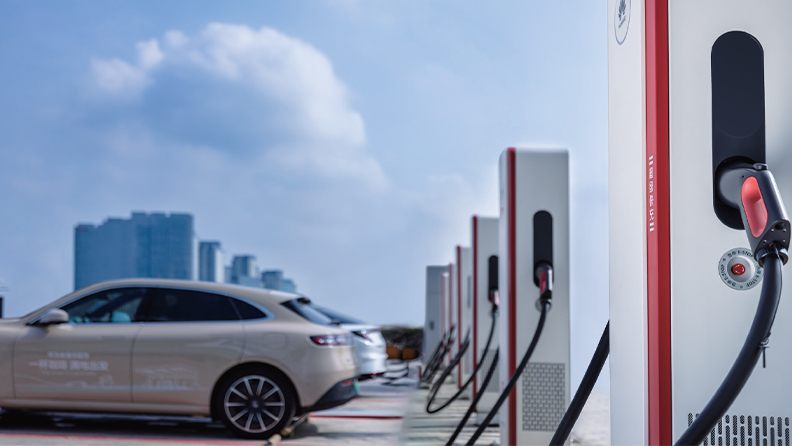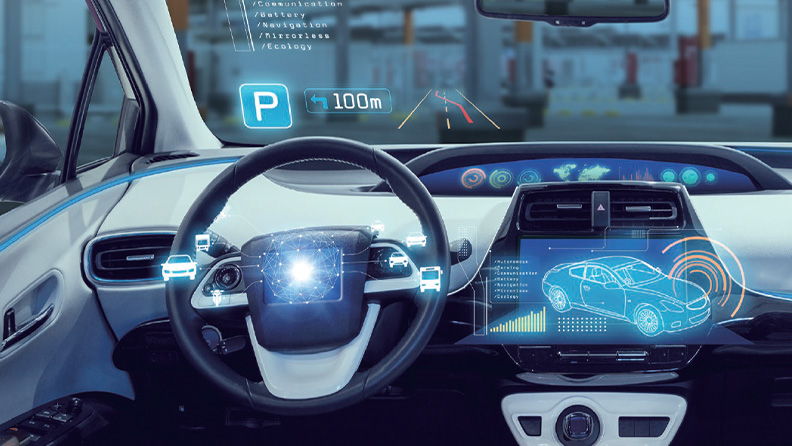What Is EV Charging? A Complete Guide to How It Works
What Is EV Charging & How Does It Work? Charging Types & Times Explained
If you are thinking about getting an electric vehicle (EV), one of the first things you will want to figure out is: What is EV charging, and how does it actually work? Unlike filling up a gas tank, EVs rely on electricity to power up, but not all charging options are the same. Some methods take hours, while others can get you back on the road in minutes.
In this guide, we will break down everything you need to know about EV charging—how it works, the different types available, how long it takes, and what affects charging speed—so you can charge smarter and drive with confidence.
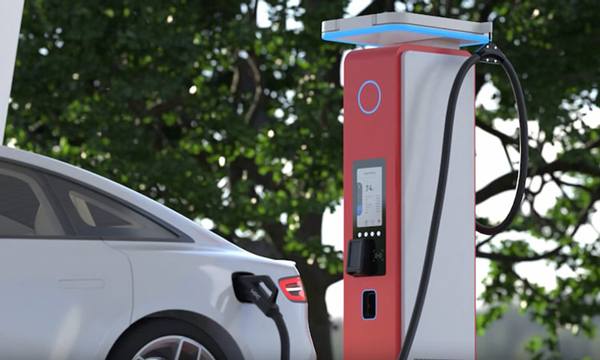
What Is EV Charging? How Does It Work?
Electric vehicle (EV) charging is the process of supplying electricity to your EV's battery to keep it powered and ready for the road. Just like charging a cell phone or laptop, an EV needs to be plugged into a power source to recharge, which can be your home power outlet or a public charging station.
So, how does EV charging actually work? It is pretty simple: When you plug your EV into a compatible charging station or your home outlet using its charger, electricity flows through the charging cable into your car's battery.
However, there is a problem —your EV's battery needs direct current (DC) power, while most chargers supply alternating current (AC). That is where your car's On-Board Charger (OBC) comes in. This device converts AC to DC, ensuring your battery stores energy efficiently. The process is automatic, so all you need to do is plug it in and wait.
For those wondering, how do EV charging stations work? They pull electricity from the power grid, regulate voltage and current, and safely transfer energy to a vehicle. Some stations also support smart charging, optimizing power delivery based on demand and energy availability.
With EV charging infrastructure continuing to expand everywhere, more drivers can access reliable charging solutions at home, work, and public stations—making EV ownership more practical than ever.
Types of EV Charging
Not all EV charging is created equal, though. There are currently 4 different levels of charging options available, each varying in speed and power delivery:
Level 1: Basic Home AC Charging
Level 1 charging is the slowest but most accessible charging method. This is the charger your EV comes with. It delivers around 2-3 kW of power, typically adding about 10 km of range per hour.
This method is ideal for overnight charging or for drivers with light daily use, since you can simply plug in at home and let the car charge while you sleep. No special installation is required for Level 1; it is essentially “plug-and-play,” making it a convenient starting point for new EV owners.
Level 2: Fast AC Charging
Level 2 charging is much faster (7–11 kW or higher), and it can increase the driving range by 50 km or more per hour.
So, what is a Level 2 EV charger? Think about those wall-box chargers at home or public EV stations at places like shopping malls, hotels, or office buildings.
Setting up a Level 2 charger at home typically requires an electrician to install the proper outlet or wall unit, but once in place, it provides a reliable everyday charging solution.

Level 3: integrated DC Charging
The integrated DC charger integrates the functions of charging modules, charging control, metering and billing, and communication, etc. It can flexibly control charging according to the needs of vehicles to meet DC fast charging in multiple scenarios.
Unlike Level 1 and 2 (which use AC power and rely on the car's On-Board Charger (OBC), DC Fast Charging feeds direct current (DC) to the battery, which dramatically cuts down charging time.
An integrated DC fast charger can deliver a power of 40 to 300 kW or even higher, adding about 200–300 km of range in just 20–30 minutes.
New Level: split-type DC charging
The split-type charging system has been widely used. Through the shared power pool composed of charging modules, the dynamic allocation of charging power can be realized. It can be equipped with different forms of charging terminals to meet the charging needs of all electric vehicle models from 50 V to 1000 V, and realize a more flexible, reliable charging experience with a higher demand-satisfaction rate. The power of the group charging system mainly includes 240 kW, 480 kW, etc. The power of 720 kW, 960 kW, 1200 kW, 1440 kW, and even higher power of the pool equipment can also be selected according to actual needs.
These chargers are commonly found at highway rest stops, petrol stations, and other high-traffic areas, since they are ideal for long-distance travel and quick pit stops. For example, highway R&R (Rest and Service Areas) along the North–South Expressway are increasingly equipped with DC chargers to support road trips.
How Long Does It Take to Charge Your Electric Vehicle?
Now that we've covered the 4 charging levels, the next big question is: how long does it take to charge your EV? Well, charging time can vary widely based on the charger type and your vehicle's battery capacity:
Level 1 (Home Outlet)
This adds about 10 km of range per hour. For a small EV with, say, a 30-kWh battery, reaching 80% could take around 8–12 hours overnight. Larger EVs with 60–70 kWh batteries might need 15–20 hours or more to go from empty to full.
Level 2 (Home/Public AC)
If you need a faster solution, Level 2 charging can increase the driving range by 20 to 130 km or more per hour. With a typical 7 kW home wall-box or public charger, a mid-sized EV (40–50 kWh battery) can be charged to 80% in about 4–5 hours, or it can be fully charged in roughly 6–8 hours.
Larger EVs (e.g. 70–80 kWh) might take about 8–10 hours for 80%, which still comfortably fits in an overnight session. In practice, this means you can plug in when you get home from work and wake up to a nearly full battery.
Level 3 (integrated DC Charging)
Need an even quicker boost? A stop at an integrated DC charger with a power of 40 to 300 kW or even higher can often take you from near empty to 80% in about 20–40 minutes. In real terms, if you are driving a smaller battery EV, you might get to 80% in under half an hour. A larger battery EV might take closer to an hour at the same station, or even faster if the station is an ultra-fast 300+ kW unit (provided your car supports it).
New Level (split-type DC charging)
The power unit is the core part of a split-type DC charging system for a public charging station and other sites demanding multiple fast chargers. With AC/DC and DC/DC modules decoupled, power units can better utilize power capacity and be accessible to DC ESS coupling.
An innovative architecture with DC bus enables enhanced charging, superior quality and flexible architecture. A stop at a split-type DC charger with a power of 240 to 720 kW or even higher can often take you from near empty to 80% in about 10–30 minutes even fast.
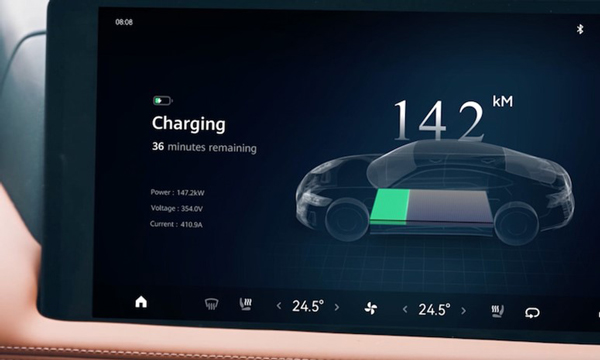
With a noise level of less than 50 dB*, it ensures a quiet and efficient charging experience. Additionally, the liquid-cooled system extends durability for over 10 years, with an annual module failure rate of less than 0.5%*.
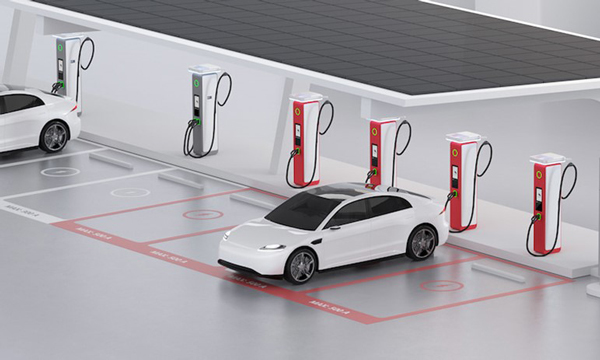
Battery Size and State of Charge
The larger your battery capacity, the longer it takes to charge. A vehicle with a 70-kWh battery will take more time to charge than one with a 30-kWh battery using the same charger. Additionally, the state of charge—or how much charge your battery already has—impacts charging speed. Most EVs charge faster from 0% to 80% but slow down significantly after that to protect battery health.
Vehicle’s Maximum Charging Rate
Even if you plug into a high-power DC charger, your EV will only charge as fast as its onboard charging capacity allows. For example:
Some EVs can only accept 50 kW from a DC charger, even if plugged into a 150 kW station.
Similarly, an EV with a 7 kW onboard charger will not benefit from an 11 kW AC charger—it will still charge at 7 kW.
Battery Temperature
Temperature plays a crucial role in charging efficiency. EV batteries operate best at moderate temperatures (around 20-25°C). If it is too hot or cold, charging speed may slow down due to the car's battery management system (BMS), which protects the battery from overheating or freezing.
Conclusion
By now, you have a solid grasp of what EV charging is and how it works. Whether you are plugging in at home or using a public fast charger, knowing the different types and how long they take can help you plan your charging routine more efficiently.
If you drive short distances daily, Level 1 home charging is sufficient. If you need faster charging for daily use, install a Level 2 AC charger at home or use public charging stations. For those frequently travel long distances and need the quickest boost, it is ideal to plan your trips using the DC fast-charging network!
As part of the global push for carbon neutrality, Huawei Digital Power is driving clean energy and smart eMobility solutions to enhance EV charging and sustainability. Our FusionCharge Liquid-Cooled DC Charging Dispenser delivers 200+ km of range in just 5 minutes, while the FusionCharge DC Charging Power Unit supports intelligent peak shaving and future PV & ESS integration. With advanced solutions like these, EV infrastructure is becoming faster, smarter, and greener.
FAQs
How does an EV charging system work?
An EV charging system transfers electricity from a power source to your vehicle's battery. Charging time depends on the charger type, battery size, and current charge level. Simply put, the system replenishes your EV's battery so you can drive efficiently and sustainably.
What does EV stand for?
EV stands for “Electric Vehicle.” It refers to vehicles that run on electricity instead of traditional petrol or diesel. EVs use rechargeable batteries and can be charged at home or public charging stations.
Are public EV chargers free?
Public EV chargers are not always free. While some shopping malls, hotels, or office buildings may offer complimentary charging for customers, most public charging stations require payment based on usage. The cost typically depends on the charger type (AC or DC fast charging) and the charging network provider.
*The data is based on theoretical values obtained by Huawei internal labs through tests carried out under specific conditions. Actual performance may vary due to differences between software versions, usage conditions, and environmental factors. All data is subject to actual usage.
*The dispenser noise is less than 50 dB(A)@25°C at 1 m. The data is based on theoretical values obtained by Huawei internal labs through tests carried out under specific conditions. Actual performance may vary due to differences between software versions, usage conditions, and environmental factors. All data is subject to actual usage.




 Search
Search
 EN
EN




